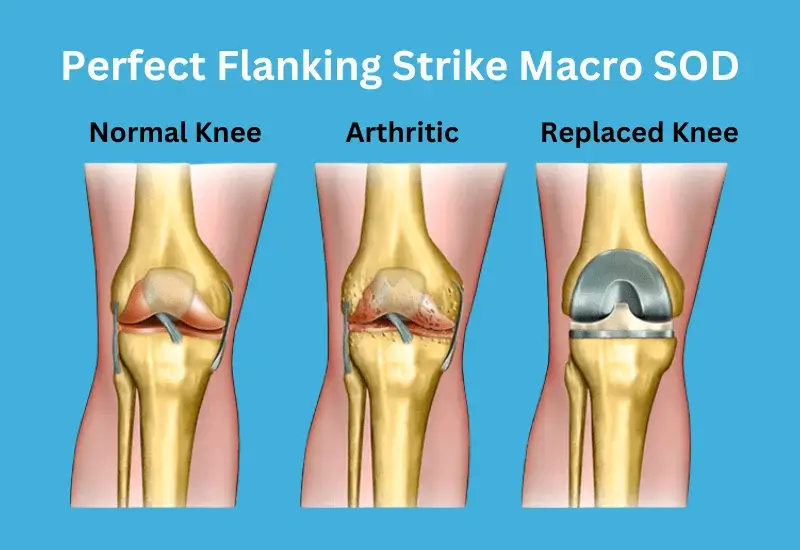The Ultimate Guide to Knee Replacement Surgery
Knee replacement surgery is a significant medical procedure that can greatly improve a patient’s quality of life. It involves replacing a damaged or worn-out knee joint with an artificial one to relieve pain and restore mobility.
What is Knee Replacement Surgery?
Knee surgery, also known as knee arthroplasty, is performed to relieve pain and restore function in a knee joint that has been severely damaged by arthritis, injury, or other conditions. The surgery involves removing the damaged parts of the knee and replacing them with artificial components made of metal and plastic.
Types of Knee Replacement Surgery
There are two primary types of knee replacement surgery:
- Total Knee Replacement (TKR): This procedure replaces the entire knee joint, including both sides of the joint and the knee cap.
- Partial Knee Replacement (PKR): Only the damaged portion of the knee joint is replaced, preserving the healthy parts of the knee.
Both types of surgeries are viable options depending on the extent of the knee damage. For many patients, the choice between total and partial knee replacement depends on the severity of the arthritis and the overall condition of the knee.
Why Undergo Knee Replacement Surgery?
Highly effective solution for individuals who suffer from chronic knee pain and mobility issues that do not respond to non-surgical treatments such as physical therapy or medications. Patients who undergo knee replacement often experience significant pain relief and improved quality of life.
Benefits of Knee Replacement Surgery
There are several benefits to undergoing knee replacement surgery, including:
- Pain Relief: Knee replacement surgery is primarily performed to relieve pain, often caused by osteoarthritis or other degenerative conditions.
- Improved Mobility: After successful knee replacement surgery, many patients regain the ability to walk, run, and perform other activities that were once too painful.
- High Success Rate: Knee replacement surgery has a high success rate, with most patients experiencing long-lasting results.
- Enhanced Quality of Life: With reduced pain and improved function, patients typically enjoy a better quality of life, engaging in activities they previously found difficult.
The Knee Replacement Procedure
The process of undergoing knee replacement surgery is thorough, with various steps designed to ensure the best outcome for the patient. Here’s a detailed look at the procedure:
1. Consultation and Diagnosis
The journey begins with a consultation with an orthopedic surgeon. The surgeon will evaluate the condition of the knee using physical exams, imaging tests like X-rays or MRI scans, and a review of the patient’s medical history. If the damage to the knee joint is severe, the surgeon may recommend a knee replacement as the best treatment option.
2. Preparing for Surgery
Before surgery, patients are required to undergo several preoperative tests, including blood tests and cardiac evaluations. This ensures that the patient is healthy enough to undergo surgery. Patients may be advised to stop certain medications or follow specific dietary guidelines before the procedure.
3. The Surgery
On the day of the surgery, the patient is placed under general or regional anesthesia to ensure a painless experience. The surgeon then makes an incision over the knee and removes the damaged cartilage and bone. The artificial knee components are then fitted and attached to the bone. These components are designed to mimic the movement of a natural knee joint, allowing for smooth motion and reducing pain.
4. Post-Surgery Care and Rehabilitation
The patient is monitored in the recovery room. Pain management is an important part of the postoperative care, and patients are provided with medications to control pain. Most patients are able to start walking with assistance within 24 hours after the procedure, and they are encouraged to begin physical therapy soon after surgery.
Recovery After Knee Replacement Surgery
Recovering from a knee replacement surgery involves a combination of rest, physical therapy, and follow-up care. Most patients stay in the hospital for 3-5 days after surgery, although the exact length of stay can vary depending on individual recovery times.
Physical Therapy
Physical therapy is a critical component of the recovery process. A physical therapist will work with the patient to develop a rehabilitation plan, focusing on exercises that help restore knee strength, flexibility, and range of motion. Regular sessions are essential to ensure a successful recovery.
Pain Management
After knee surgery, pain management is key to a smooth recovery. Medications, ice therapy, and other methods are used to manage pain and reduce inflammation. As the patient heals, the intensity of the pain decreases, and they can gradually return to their normal activities.
Who is a Good Candidate for Knee Replacement Surgery?
Not everyone with knee pain will require knee surgery. It is usually recommended for individuals who have:
- Severe Osteoarthritis: If arthritis has caused extensive damage to the knee joint and non-surgical treatments have failed, knee surgery is often the next step.
- Chronic Knee Pain: Individuals who suffer from chronic knee pain that limits their daily activities and does not respond to conservative treatments may be candidates for surgery.
- Reduced Mobility: If knee pain or stiffness is preventing someone from walking or performing other routine tasks, knee surgery can help restore function.
- Deformity: In some cases, knee joint deformities caused by trauma or arthritis can be corrected through knee surgery.
Minimally Invasive Techniques in Knee Replacement Surgery
Minimally invasive surgery is an option for some patients undergoing knee replacement. In this type of surgery, the surgeon makes smaller incisions compared to traditional replacement techniques, which reduces damage to the surrounding muscles and tissues. This approach can result in:
- Faster Recovery: Patients typically experience quicker recovery times due to less tissue damage.
- Reduced Pain: Minimally invasive surgery may lead to reduced postoperative pain, allowing patients to resume normal activities sooner.
- Smaller Scars: The smaller incisions used in minimally invasive surgery result in less noticeable scarring.
What to Expect After Knee Replacement Surgery
Patients can expect a period of rehabilitation and recovery. It may take several weeks to months before a patient regains full mobility, but with the help of physical therapy, most individuals experience significant improvements.
Long-Term Results
Most knee replacement implants last between 15 to 20 years, depending on factors such as the patient’s activity level, weight, and overall health. Advances in materials and surgical techniques mean that modern knee replacements are more durable and effective than ever before.
Possible Risks and Complications
As with any surgery, knee replacement carries certain risks, including infection, blood clots, and nerve damage. However, these risks are relatively low, especially when the procedure is performed by an experienced orthopedic surgeon. It is essential for patients to follow their doctor’s instructions carefully to minimize the risk of complications.
Knee Replacement Success Stories
Many patients have undergone knee surgery with outstanding results. They report significant improvements in pain relief, mobility, and overall quality of life. These success stories highlight the transformative impact of knee replacement surgery on individuals suffering from chronic knee issues.
Why Choose Knee Replacement Surgery?
Replacement surgery is a life-changing procedure for individuals suffering from debilitating knee pain. It offers a permanent solution to pain and allows patients to return to a more active lifestyle. When non-surgical treatments such as medication, physical therapy, or injections are no longer effective, knee replacement becomes the best option.
Conclusion
Knee surgery is a proven and highly effective treatment for individuals suffering from severe knee pain or mobility issues. With advanced surgical techniques, experienced surgeons, and personalized rehabilitation programs, patients who undergo knee replacement can look forward to a life free from pain and full of mobility. Whether you’re dealing with chronic arthritis or injury-related knee problems, replacement can provide the relief and long-term results you need to enjoy a better quality of life.



